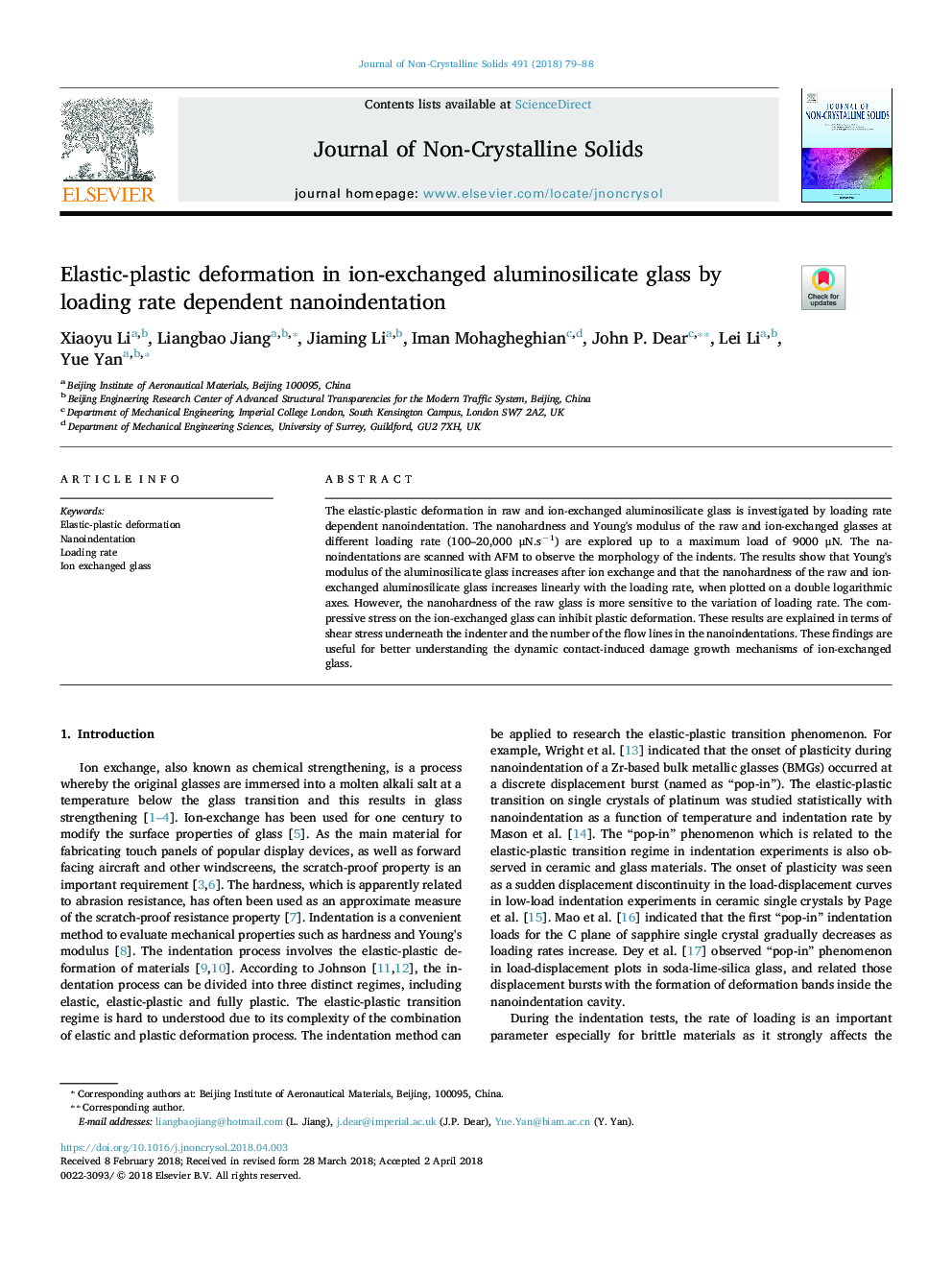| Article ID | Journal | Published Year | Pages | File Type |
|---|---|---|---|---|
| 7899899 | Journal of Non-Crystalline Solids | 2018 | 10 Pages |
Abstract
The elastic-plastic deformation in raw and ion-exchanged aluminosilicate glass is investigated by loading rate dependent nanoindentation. The nanohardness and Young's modulus of the raw and ion-exchanged glasses at different loading rate (100-20,000 μN.sâ1) are explored up to a maximum load of 9000 μN. The nanoindentations are scanned with AFM to observe the morphology of the indents. The results show that Young's modulus of the aluminosilicate glass increases after ion exchange and that the nanohardness of the raw and ion-exchanged aluminosilicate glass increases linearly with the loading rate, when plotted on a double logarithmic axes. However, the nanohardness of the raw glass is more sensitive to the variation of loading rate. The compressive stress on the ion-exchanged glass can inhibit plastic deformation. These results are explained in terms of shear stress underneath the indenter and the number of the flow lines in the nanoindentations. These findings are useful for better understanding the dynamic contact-induced damage growth mechanisms of ion-exchanged glass.
Related Topics
Physical Sciences and Engineering
Materials Science
Ceramics and Composites
Authors
Xiaoyu Li, Liangbao Jiang, Jiaming Li, Iman Mohagheghian, John P. Dear, Lei Li, Yue Yan,
